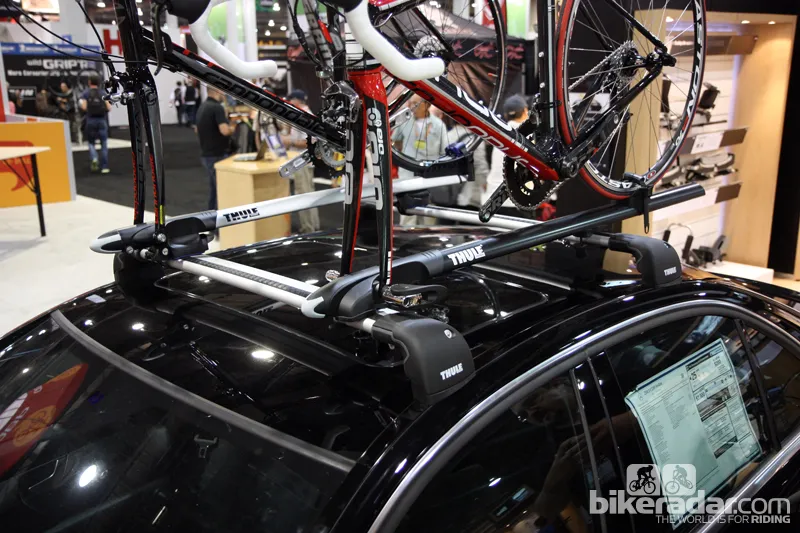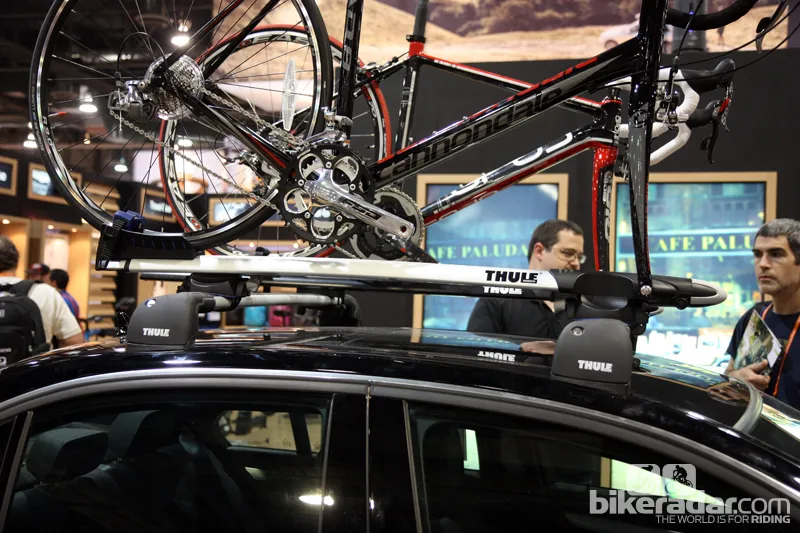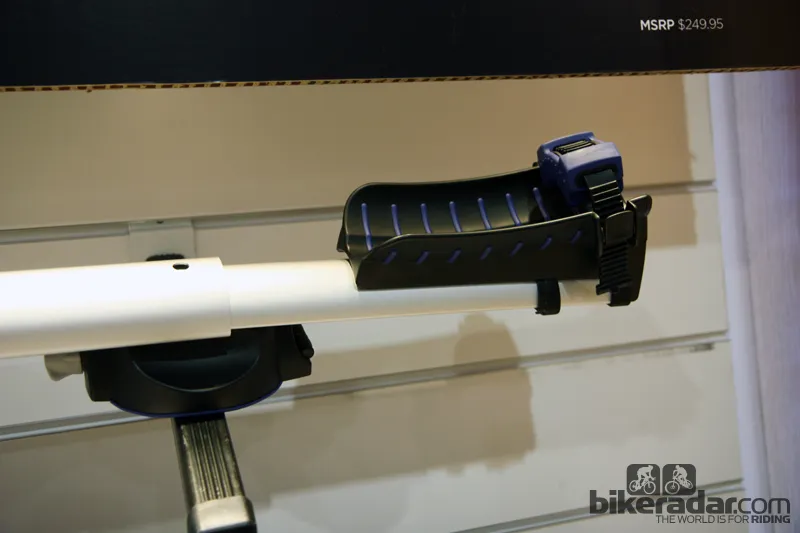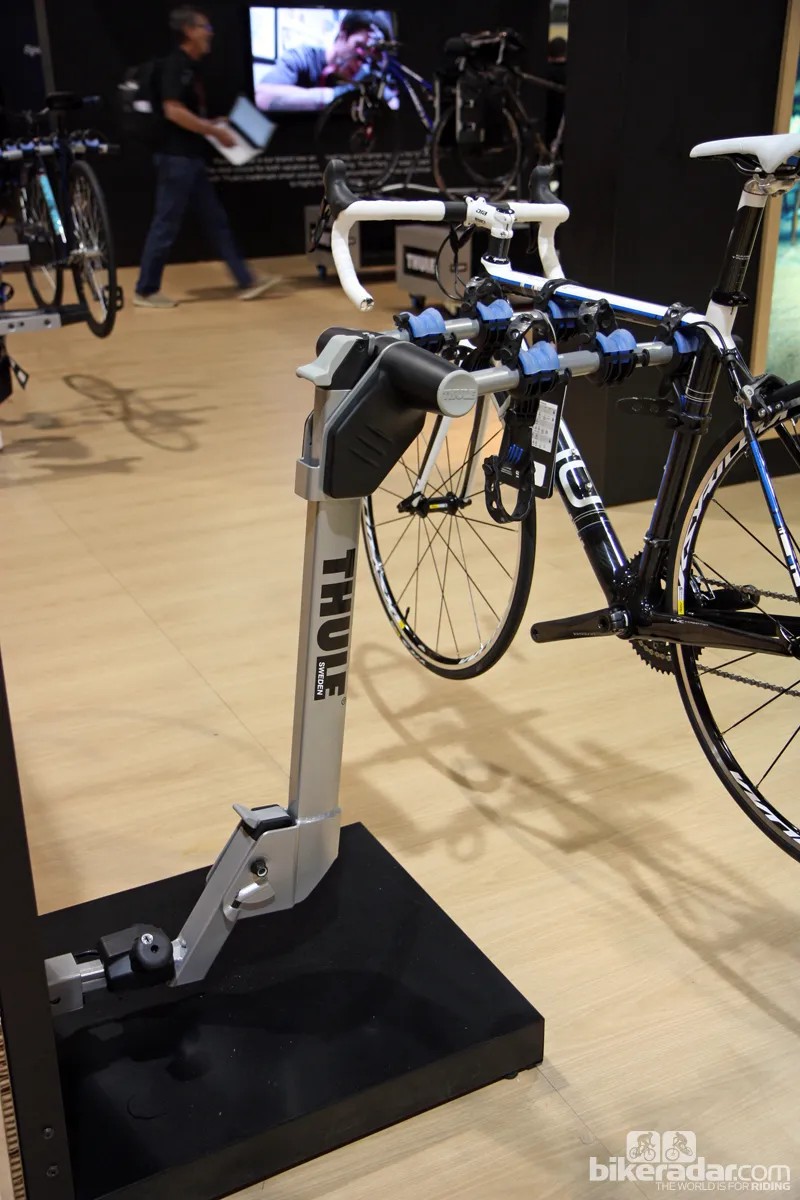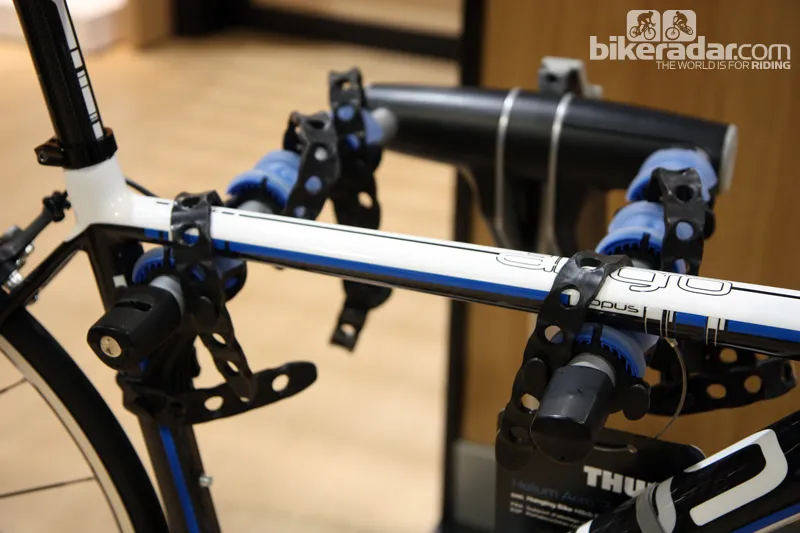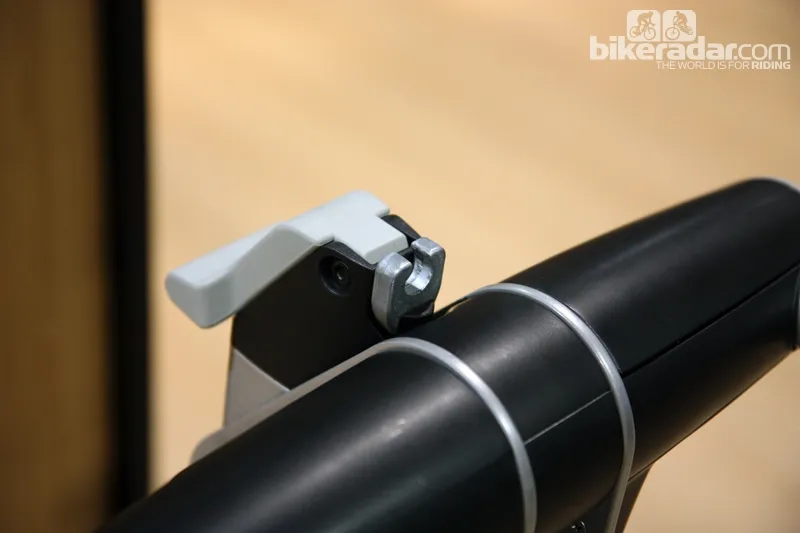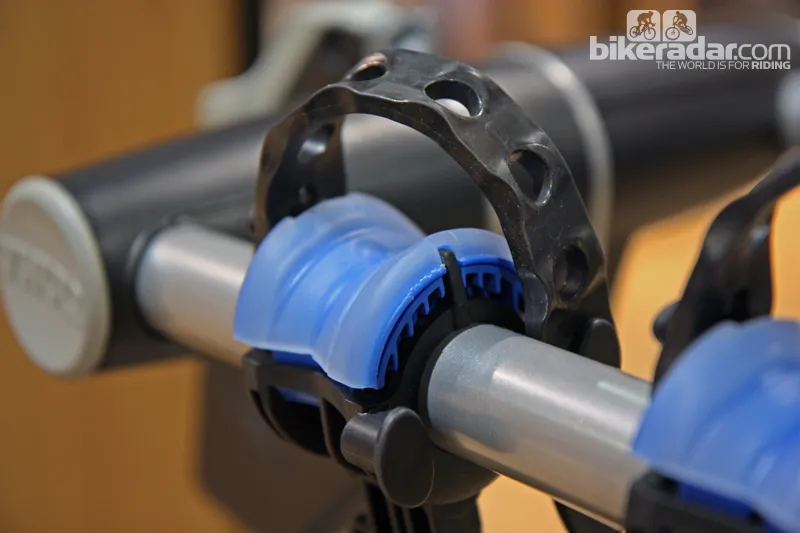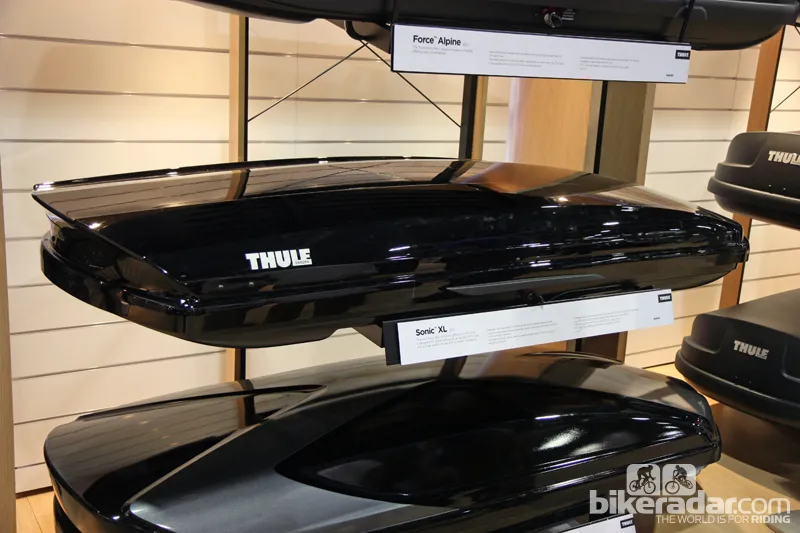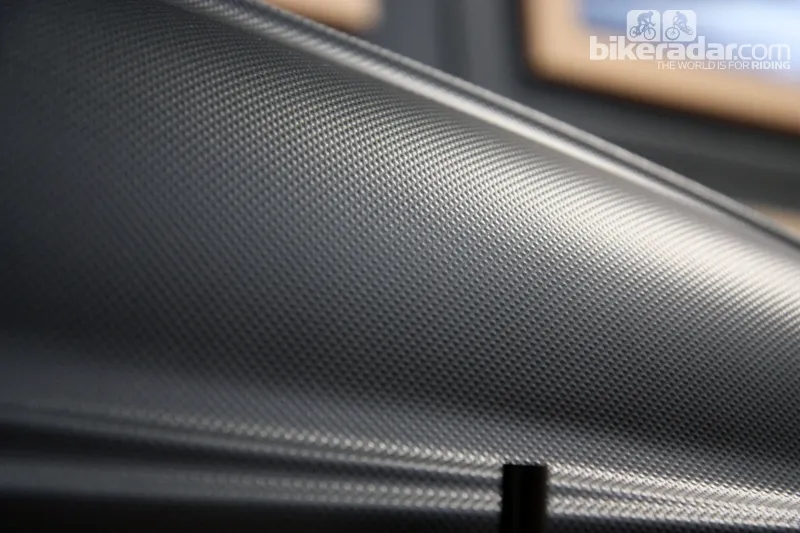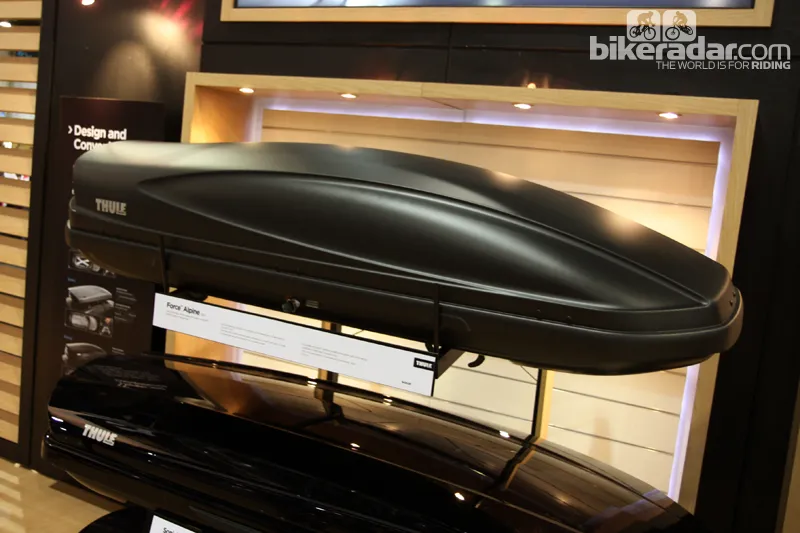Following up on the AeroBlade aero-profile roof rack system announced last year, Thule is now going aero through much of the rest of the line, including two new fork-mount trays, sleek cargo boxes and a lightweight aluminum hitch rack.
While bike aerodynamics is all about going faster, the main benefits for transportation products are reduced wind noise and increased fuel efficiency.
Two trays, no waiting
Thule launched two new fork mounts at this year's Interbike – the higher-end Sprint (US$250) and the more moderately priced Circuit (US$169). These are intended to be a better visual match for the AeroBlade's sleek, extruded aluminum crossbars. Both are built with novel, bullet-like heads, burly, hollow-extruded aluminum trays and versatile tool-free mounting systems that work with nearly any crossbar shape.
While the Circuit utilizes a more conventional locking skewer design and sliding ratchet rear wheel strap, the Sprint features a more advanced setup to secure both ends. Up front is an 'AutoTorque' knob that automatically clamps the fork tips at the correct torque to prevent damage – and also ensure a secure fitment. Meanwhile, the back wheel is secured in a long cradle attached to an extendable aluminum extrusion.
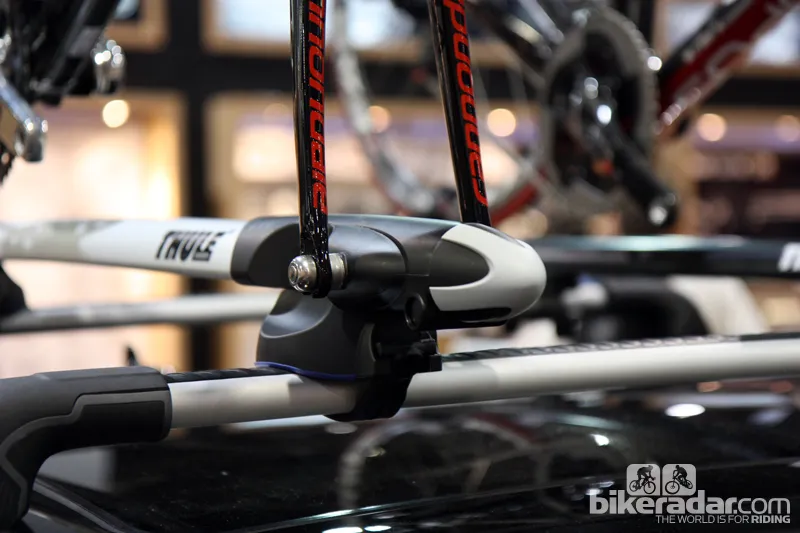
The AutoTorque clamping mechanism
Both trays will be available in spring 2013.
New Helium Aero lightens up
If hitch racks are more your style – and especially if you don't like leaving them on your vehicle all the time – Thule's new Helium Aero should be appealing. It has an aluminum construction and slimmed-down, 8.9kg (19.62lb) claimed weight.
For reference, Thule's T2 is more than double that. Moreover, Thule has built the main upright with a nominally aerodynamic cross-section that presumably decreases wind drag (when there aren't any bikes mounted, at least).
That sort of portability would be useless if the Helium Aero were a hassle to install and remove, but it seems Thule has that figured out as well – the rack has a clever AutoAttach base, which both tightens the rack in the receiver and locks it in place, all with no tools required.
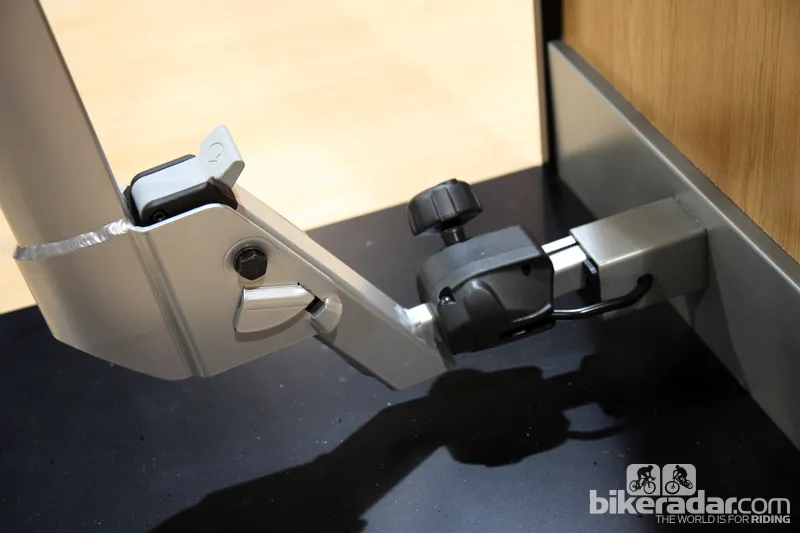
The AutoAttach base on the new Helium Aero, complete with tilt-down function
Up to three bikes can be secured in Thule's RDT (Road Dampening Technology) cradles, which are built with dual-density padding and thick rubber straps to protect the bike's finish and keep them from swaying in transit.
Additional features include arms that fold down when not in use, a tilting base so that SUV and hatchback owners can access the rear of the vehicle even with bikes loaded, and an integrated cable lock hidden inside the upright.
The Helium Aero is set to hit stores around February 2013, with a suggested price of US$339 for a two-bike version and US$379 for three-bike capacity.
Sleeker, quieter and more stylish cargo boxes
Thule has even redesigned its cargo box range to reduce aerodynamic drag – a key feature as rooftop boxes present a lot of frontal area to the wind.
Both the new Sonic and Hyper boxes are built with newly pointed noses and lower-profile forms that decrease wind noise. They also have fabric-lined interiors to keep contents from sliding around too much. Internal reinforcements lend extra structure to the dual-sided, clamshell-type lids for easier opening, new AcuTight sliding clamps automatically adjust to the proper torque, and the Hyper even includes a built-in interior LED so you can spot contents in the dark.
The new Force box continues with the older rounded nose but still gets some aerodynamic enhancements in the form of a textured surface called AeroSkin. According to Thule, the bumpy surface – similar to Zipp's wheel dimples but with the bumps facing outward – decreases drag by helping air 'stick' to the box, thus producing smoother flow.
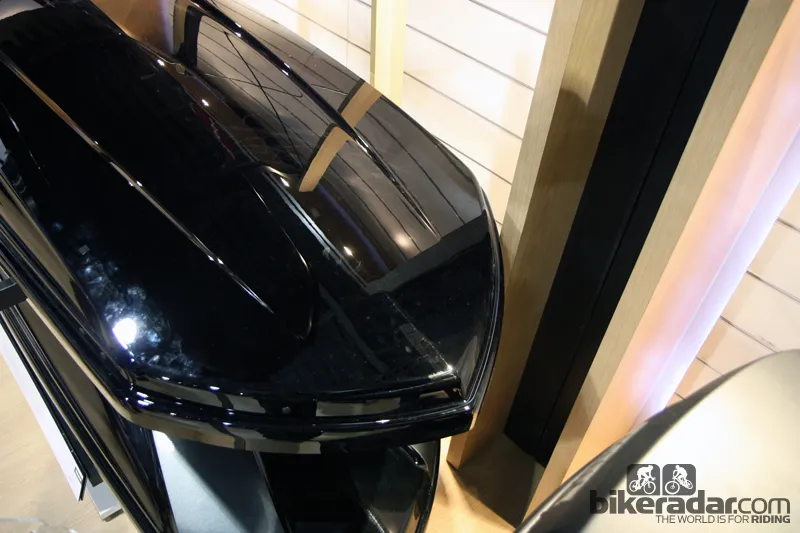
The pointed noise is a key feature on Thule's new cargo boxes
Expect to pay at the cash register for the sleeker forms, though – the largest Sonic commands a whopping US$629, while the Hyper XL will cost US$949.
